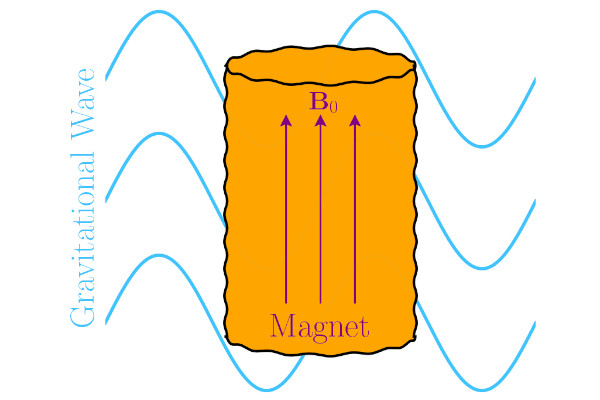Magnets Could Unlock a New Way to Detect Gravitational Waves
Magnets Could Unlock a New Way to Detect Gravitational Waves

July 30, 2025 — Marsha Fenner
Berkeley Lab Physics Division News
A team of researchers at Berkeley Lab and UC Berkeley has discovered a new way to search for gravitational waves that opens the door to building detectors that are deeply synergistic with the search for dark matter.
A team of theoretical physicists at Berkeley Lab and UC Berkeley has discovered a new way to search for gravitational waves using large magnets instead of traditional laser-based detectors, such as the Laser Interferometer Gravitational-wave Observatory (LIGO), where researchers first observed gravitational waves, earning the 2017 Nobel Prize in Physics. The team's discovery opens the door to building smaller – but still very powerful – detectors that fit in room-sized labs rather than stretching across many kilometers.
The most successful approach for detecting gravitational waves currently relies on giant laser-based observatories that pick up the slowly oscillating waves produced by black hole collisions. Before LIGO became the frontrunner, an earlier idea for gravitational wave detection was to use a large block of aluminium that would oscillate as the wave passed. These devices were called Weber Bars after their discoverer, Joseph Weber.
The team's proposal, published recently in Physics Review Letters, is simple but powerful: just like a block of aluminium, a magnet will shake in response to a gravitational wave, generating a small oscillating magnetic field through which the wave can be detected. In essence, a magnet can act as a very sensitive Weber Bar. “This new work shows that the type of large-scale magnets that are being built to search for dark matter can also act as sensitive antennas for gravitational signals oscillating faster than what LIGO can see,” said Nick Rodd, a staff researcher in Berkeley Lab’s Physics Division. “This finding bridges two major frontiers in physics – gravitational waves and dark matter – and suggests that tools built for one could help with the other.”
A key question is what such a device may see. “As high-energy particle physicists and cosmologists by training, we do not restrict our interest to standard astrophysical gravitational wave signals,” explains Sebastian Ellis of the University of Geneva, a collaborator and co-author on this research. “Rather, we like to consider other hypothetical sources of gravitational waves, such as extremely energetic processes in the early universe, or mergers of black holes that could have sub-solar masses and comprise a fraction of dark matter. When we open ourselves to this possibility, it widens the range of gravitational wave frequencies that are worth targeting, extending to well above kilo-Hertz.”
The new concept is applicable across a broad range of magnets, but it is particularly well-suited to the powerful magnets being deployed in search of axion dark matter, a possibility recently explored by the wider international research community during a workshop at Berkeley Lab earlier this year.
By expanding the search for dark matter into these higher (kilo-Hertz and mega-Hertz range) frequencies, the concept could lead to a whole new class of experiments and open a new window into the universe through gravitational waves that could potentially herald new groundbreaking discoveries.